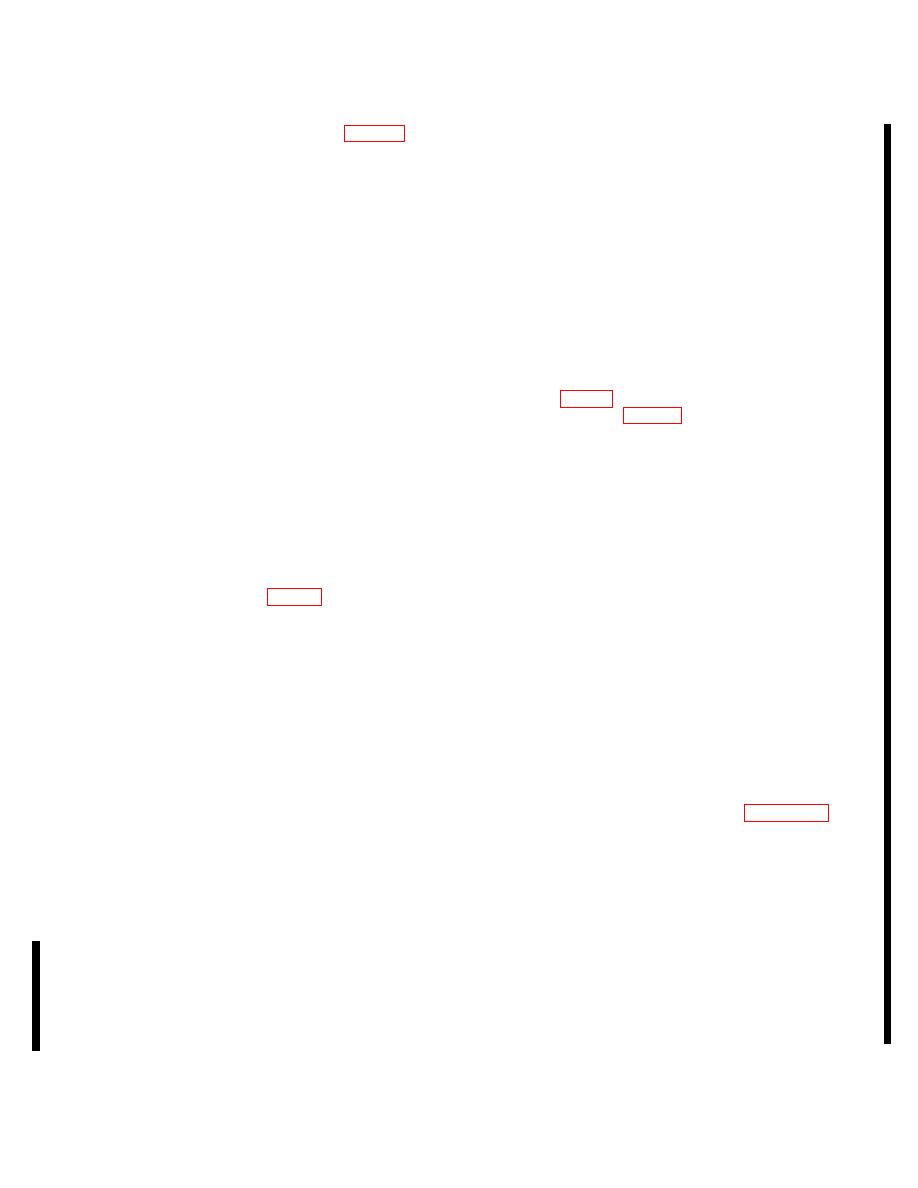 |
|||
|
|
|||
|
|
|||
| ||||||||||
|
|
 TM 5-6350-262-14/1
NAVELEX 0967-LP-466-9012
TO 31S9-4-36-1 Chg 2
processor/receiver
ultrasonic
passive
signal
(2) Set the RANGE control (fig. 1-1) on
synchronized to another processor.
Even if the
each transceiver by referring to table 2-2 and taking into
processors and their associated transceivers are in
consideration the number of transceivers and the
separate rooms, synchronization is necessary since
turbulent conditions associated with each transceiver.
quite often energy will "eak" from one room to another.
l
(3) Apply (the power from J-SIIDS control
Any one processor in a group to be synchronized
unit to the processor.
together is to be designated the master and all others
(4)
The noise level as read on the
are to be designated slaves. All slave processors shall
multimeter should indicate less than 0.15 Vac.
lie modified as directed in chapter 7. The master need
(5) Connect an oscilloscope (AN/USM-
not be modified. Each processor/transceiver system
281) between the BALANCE and REFERENCE test
shall he separately noise tested and walk tested with the
points in the processor. Set oscilloscope to DC input,
other systems turned off. Only after each system has
adjust VERTICAL, position to center trace with no input.
been separately tested shall the processors be
(6) Observe the oscilloscope. The noise
synchronized together. A synchronizing connection of
level appears as an erratic waveform fluctuating above
RG58/U coaxial cable must be made between the
and below the reference level (fig. FO-3, located at rear
master and slave and between adjacent slaves as
of manual). Fluctuations should not be more than 0.3V
shown on FO-1A. On each slave the RED reference
in either direction of the reference. The alarm threshold
transducer lead (see fig. 2-5) must he disconnected and
is at 0.8V.
insulated with electrical tape.
(7)
Disconnect the multimeter and
oscilloscope test leads.
NOTE
c. Walk Test. This test is essentially the same as
Unless the RED lead is disconnected,
the walk test as performed in the preliminary
the slave will not function properly.
adjustments, section III except that all transceivers are
connected and operating.
2-20. Nuisance Alarms
(1) As an aid during walk testing, connect
an audible sounder to the processor. Connect the
If either the processor/transceiver ultrasonic motion
positive lead to the ALARM test point and the negative
signal or the processor/receiver ultrasonic passive signal
lead to the GROUND test point (fig. 1-1).
experiences an excessive number of nuisance alarms,
(2) Walk through the entire area as covered
the cause must be investigated. A probable cause is
by each of the transceivers. Walk at a rate of
sources and entry points of ultrasonic energy in the
approximately one foot per second. While walking, the
protected area. Possible sources are motors, fans,
alarm circuit should be activated as indicated by an
bells, buzzers, and horns operating during periods when
audible sound. Shortly after coming to an absolutely
the area is secured. Possible entry points are ducts,
motionless position the alarm circuit should be
vents, cracks in walls, floors, ceilings, around windows
deactivated and then reactivated when motion is
and under doors, and similar points where the flow of air
resumed.
or the wind may inject ultrasonic energy. As an aid in
(3) Reduce the RANGE control setting of
locating ultrasonic energy sources and entry points, a
the transceiver assigned to the walk test area and repeat
transceiver with only its receive cable connected
the walk test until the range begins to drop off. The final
(transceiver terminals 3 & 4) may be used as a " niffer"
s
setting of the RANGE control is at the lowest acceptable
in the conduction of a noise test (para. 2-12). By
level.
systematically moving the " niffer" transceiver
s
(4) Perform (2) and (3) above for each
throughout all parts of the protected area, one may
transceiver in the system.
locate points of excessive ultrasonic energy. Cracks in
(5)
Remove the de power from the
floors, walls and ceilings, and around windows and door
processor.
frames should be caulked; weather stripping around
(6) Disconnect the buzzer and secure the
doors and windows should be installed or replaced, as
cover to the processor enclosure.
appropriate. Air conditioning and heating ducts and
vents should be baffled. If such measures do not
2-19. Synchronization of Processors
produce acceptable noise test results, it may be
necessary to relocate some transceivers and consider
If two or more processors are to be installed in a single
adding transceivers to the system with some or all
building, they must be synchronized together to insure
transceivers having reduced RANGE settings. After
that they are operating at the same transmit frequency.
relocation or addition of a transceiver, the noise and
Synchronization will prevent the signal generated by one
walk tests must be performed.
processor from triggering a transceiver or a
Change 2 2-11
|
|
Privacy Statement - Press Release - Copyright Information. - Contact Us |